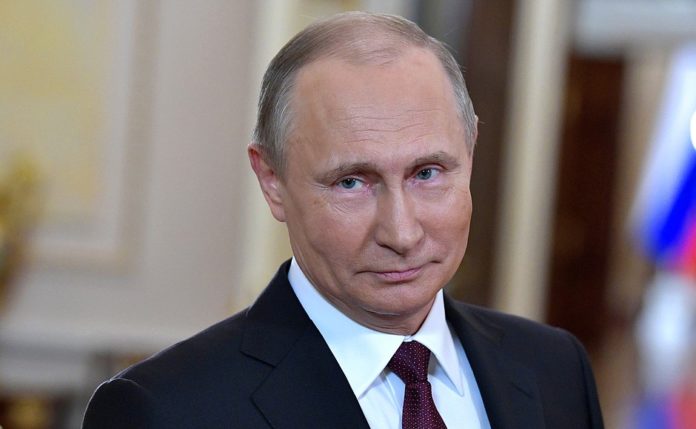Stocks fell modestly this morning as the market melt-up finally took a breather. The Dow, S&P, and Nasdaq Composite all dropped while tech stocks endured the brunt of the selling.
Short-term bulls have little to complain about, however, given how much stocks have risen since bottoming out in mid-March.
Nonetheless, uncertainty reemerged today following setbacks in the Russia/Ukraine peace talks. Negotiators from both countries said yesterday that discussions had been “productive” over the last few days. This culminated with a Russian withdrawal from the cities of Kiev and Chernihiv yesterday morning.
But optimism concerning a ceasefire was short-lived. US Secretary of State Antony Blinken commented that the recent de-escalation may simply have been a Russian diversion intended to draw out Ukrainian defenders from heavily populated civilian centers. Russia’s continued shelling near Kiev and Chernigov suggests this may be the case.
The narrative then flipped back toward peace after the Kremlin released a statement this morning claiming that Ukraine “has essentially agreed” to maintaining NATO neutrality. Ukrainian negotiators also said that a peace deal with Russia was in the works.
Following these remarks, the Financial Times dashed hopes for a ceasefire – again, just like yesterday – when it reported on the Russian withdrawal.
“We have seen the Russians begin to draw away from Kyiv. But we have little confidence at this stage that it marks some significant shift or a meaningful retreat,” a US official told the Financial Times.
Ukraine’s Defense Ministry drove sentiment lower, too, after a spokesperson said that Russian forces were preparing to “resume offensive operations.” Russia then issued another statement, saying that “the Russian army has created conditions for the final stage of the operation to liberate Donbas” and “all main tasks of the armed forces of Russia in Kiev and Chernigov have been completed.”
Stocks traded lower through noon as oil prices continued climbing.
“We’re already seeing signs of what I call a countercyclical inflation environment, sometimes called a cost-push inflation environment, where inflation gets so high that it starts putting pressure [on growth],” said Liz Ann Sonders, chief investment strategist at Charles Schwab.
Rising oil prices remain a bearish impulse as the Fed battles inflation. Only energy stocks (specifically oil-linked ones) seem to like it when oil rallies.
The rest of the market slumps in response.
And while it’s true that the conflict in Ukraine prodded oil higher today, an emergency measure to ration gas in Germany likely did as well. Russia said last week that “hostile states” would need to start paying for Russian oil in rubles.
Since then, Russia has only doubled down on this demand. German Energy Minister Robert Habeck activated the “early warning phase” of Germany’s gas emergency law in response, which means the government will begin alerting German consumers and businesses on how to conserve energy.
If the gas emergency law progresses to later phases, strict rationing will limit the amount of gas individuals and businesses are allowed to use.
Russian lawmaker Vyacheslav Volodin felt little sympathy for Germany after his country was aggressively sanctioned by the West.
“If you want gas, find rubles,” Volodin said.
Germany is still refusing to pay in rubles. As a result, rationing may soon begin, and not just in Germany. Russia dominates gas and oil exports to the EU. In 2020, Russia exported 167.8 billion cubic meters of national gas to the coalition of European nations. That’s more than any other natural gas exporter in the world.
As a result, more rationing could emerge from EU partners that don’t make the switch to paying in rubles.
It should also be noted that, as of this morning, the ruble has completely erased its post-invasion losses vs. the dollar.
It begs the question:
Who is supposed to be sanctioning who again?
Right now, it seems as though Russia’s in the driver’s seat. Yes, the country has been completely cut off from the West.
But Russia is rich in natural resources and carries a very low debt-to-GDP ratio (just 17.8% as of 2020). The US, on the other hand, saw a debt-to-GDP ratio of 128.1% in 2020 and 137.2% in 2021. That makes it difficult (if not impossible) for the US to fight inflation via monetary policy adjustments.
And Russia is doing all it can to drive up inflation in the West while protecting its own currency. Case in point, in addition to forcing oil customers to pay in rubles, Russia began buying gold at a fixed price of 5,000 rubles per gram, roughly 1,000 rubles below the going rate.
That’s a bad deal for sellers at the moment, but consider that Russia will find plenty of willing business partners if the ruble continues to recover, thus causing Russia’s fixed price for gold to exceed the spot.
So, despite assurances from the mainstream media that Russia’s economy is in a completely hopeless position, the truth is that Putin has waged a relatively effective campaign against the West in a new kind of economic war. We’re still in the early stages of it, but make no mistake, so long as the sanctions against Russia continue, it’s only going to get worse for the West.
For that reason, investors need to maintain realistic expectations about what’s going to happen the rest of the year. The war in Ukraine will eventually end, but the damage being exacted upon the US economy has only just begun. That’s made Fed Chairman Jerome Powell’s job even harder.
It also makes aggressively hawkish monetary policy look more attractive as the lesser of two evils, which would ultimately crash stocks as rate cuts and a new round of QE – both things investors assume are coming this year – fail to arrive.







